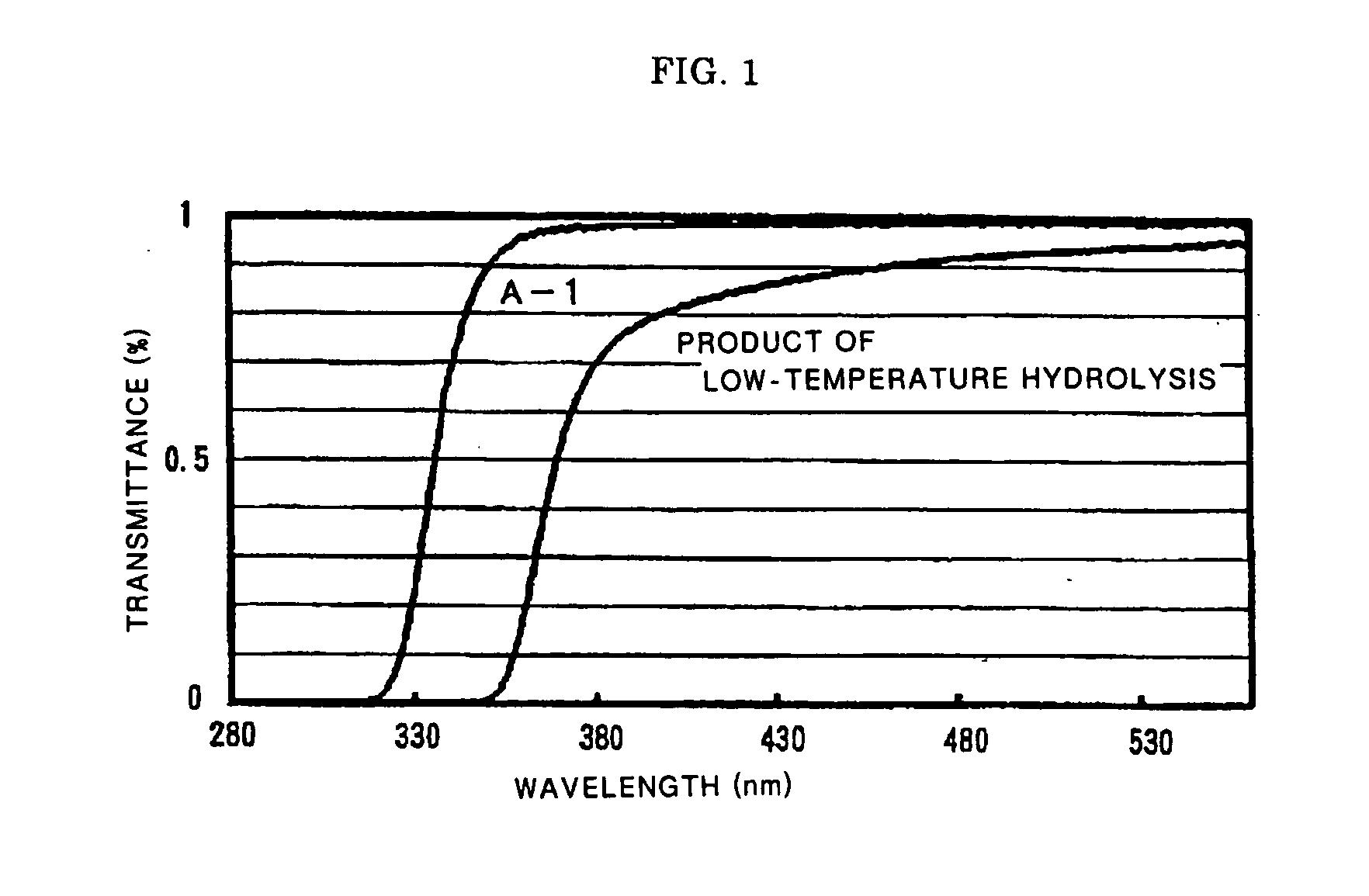Dispersed ingredient having metal-oxygen
a technology of dispersed ingredients and metaloxygen, which is applied in the direction of natural mineral layered products, instruments, optical elements, etc., can solve the problems of affecting the polymerization reaction effect of remaining substances
- Summary
- Abstract
- Description
- Claims
- Application Information
AI Technical Summary
Benefits of technology
Problems solved by technology
Method used
Image
Examples
example 2
[0138] The tetrahydrofuran solution obtained Example I was concentrated by a rotary evaporator under reduced pressure in a bath of 50.degree. C. to give a light yellow, transparent, viscous liquid of a concentration of 40.2% by weight in terms of titanium oxide. The liquid dissolved again when a tetrahydrofuran solvent was added to it.
1TABLE 1 Distilled Water / Concentration Ti(i- in OC.sub.3H.sub.7).sub.4 terms of Appearance Appearance at (mol ratio) TiO.sub.2 (%) at -74.degree. C. room temp. Example 1 1.6 5.4 Light Light yellow, yellow, transparent transparent Example 2 1.6 40.2 --Light yellow, transparent Comparative 2.0 5.4 Light Cloudy, gel Example 1 yellow, transparent Comparative 2.4 5.4 Light Cloudy, gel Example 2 yellow, transparent
example 3
[0139] 12.4 g of titanium tetraisopropoxide (A-1; produced by Nippon Soda Co., Ltd., purity: 99%, a concentration of 28.2% by weight in terms of titanium oxide) was dissolved in 45.Og of toluene in a four neck flask, replaced with nitrogen gas, and cooled to -80.degree. C. in an ethanol / liquid nitrogen bath. Separately, 1.26 g (H.sub.2O / Ti=1.6 molar ratio) of ion-exchanged water was mixed with 11.3 g of isopropanol, cooled to -80 to -70.degree. C., and, keeping this condition, dropped in the four neck flask with stirring for hydrolysis. While dropping, the liquid temperature in the flask was kept to -80 to -70.degree. C. Upon the completion of the dropping, the reaction solution was stirred for 30 minutes while cooling, and then warmed up to room temperature with stirring to give a colorless, transparent sol of a concentration of 5% by weight in terms of titanium oxide. The solution had 85% of visible ray transmittance (550 nm).
example 4
[0140] The solution obtained in Example 3 was concentrated by a rotary evaporator in a bath of 50.degree. C. to give a viscous liquid of a concentration of 54.3% by weight in terms of titanium oxide. The liquid dissolved again when a toluene solvent was added to it.
PUM
| Property | Measurement | Unit |
|---|---|---|
| temperature | aaaaa | aaaaa |
| temperature | aaaaa | aaaaa |
| temperature | aaaaa | aaaaa |
Abstract
Description
Claims
Application Information
 Login to View More
Login to View More - R&D
- Intellectual Property
- Life Sciences
- Materials
- Tech Scout
- Unparalleled Data Quality
- Higher Quality Content
- 60% Fewer Hallucinations
Browse by: Latest US Patents, China's latest patents, Technical Efficacy Thesaurus, Application Domain, Technology Topic, Popular Technical Reports.
© 2025 PatSnap. All rights reserved.Legal|Privacy policy|Modern Slavery Act Transparency Statement|Sitemap|About US| Contact US: help@patsnap.com



